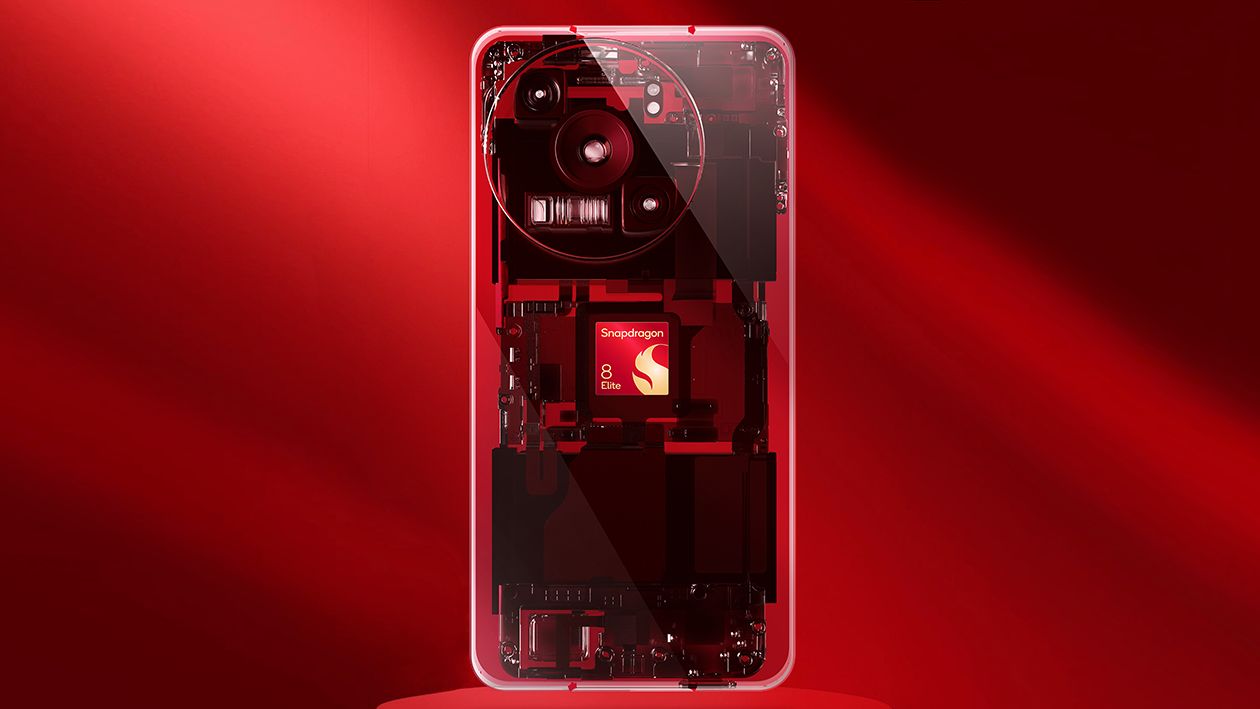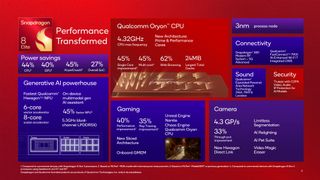
Quick Summary
Qualcomm’s Snapdragon 8 Elite platform has been revealed, bringing a new naming convention and doing away with the numbered ‘Gen’ iterations of its predecessors.
The new 8 Elite platform boasts “major architectural upgrades” with new prime cores being the “fastest in the industry” for blazing performance across AI, gaming and more.
Each year Qualcomm gathers in Hawaii to host its Snapdragon Summit – where the chip manufacturer shows-off its latest and greatest mobile innovations. And for this year, giving a preview of what’s to come to the best phones of 2025, it’s a particularly big deal.
As follow-up to the Snapdragon 8 Gen 3, revealed last year and utilised in many of the best Android phones of today, there’s going to be an ‘elite upgrade’ for many 2025 phones – because Qualcomm’s new Snapdragon 8 Elite doesn’t just bring a new naming convention for its latest flagship, the hardware is re-architected to take it to the next level.
While the numbered generational stamps are now over with – for now anyway, as it’s any guess what’ll happen next year – the new Snapdragon 8 Elite has been “built from the ground up”. So while its name may somewhat reflect Qualcomm’s X Elite name – as used in many of the best laptops and really revolutionising the Windows space in the last few months – the second-gen Oryon CPU in the mobile chip is a different beast entirely.
Update (21 October): Interestingly, Snapdragon 8 Elite will actually be in handsets that go on sale before 2025 comes around! The Xiaomi 15 series reveal is officially at the end of this month, set to be the first global launch for the new chip, while Honor also confirmed its Magic 7 will house the latest Qualcomm hardware too.
Snapdragon 8 Elite: Key Features

Greater computational power, significant improved graphics ability for gaming, and a focus on artificial intelligence (AI) is a summary of what the Snapdragon 8 Elite is all about. It's within these features where various stand-out possibilities come to light.
More power
The newly-developed second-gen Oryon CPU features new prime cores, at 4.32GHz apiece, making them the fastest in the industry. These are complemented by a further six performance cores, at 3.53GHz apiece, to offer the “best combination of performance and power”. Qualcomm has done away with efficiency cores as doesn’t see such architecture as necessary for flagship hardware and increased artificial intelligence demands.
Sign up to the T3 newsletter for smarter living straight to your inbox
Get all the latest news, reviews, deals and buying guides on gorgeous tech, home and active products from the T3 experts
Insight AI
Speaking of which: AI is front and centre, as you’d expect, with multi-modal generative AI applications now possible on device. Qualcomm’s AI Engine has received “tremendous upgrades” to lessen the pressure on cloud-based AI processing.
What will that mean in reality? A greater capacity to handle more ‘tokens’ – those being text, voice, photo and video inputs – for real-time processing. Expect quicker, more fluid AI responses in conversational tasks, for example, or for more complex AI processing of video to happen in real-time without needing to wait.

Snapdragon Elite Gaming
The raw GPU power enhancements will be seen most effectively in gaming, where Qualcomm’s new Adreno GPU is boasting a 40% boost in performance. Like its predecessor, which could run the Unreal Engine 5 and handle ray-tracing effects, the latest Snapdragon 8 Elite has support for Unreal Engine’s Chaos physics engine and Nanite engine on mobile for the first time.
What will that mean in reality? Greater efficiency for longer gameplay. Smoother playback and higher frame-rates. The ability to handle more complex geometric complexity, for more virtual objects to move at any one time. Just better gaming graphics potential, ultimately.
Camera enhancements
There’s a big shift for cameras, too, with the Cognitive ISP (that’s Image Signal Processor) of the previous-gen platform also being built from the ground up, as a new ‘AI ISP’. It’s designed to work with the hexagon NPU (neural processing unit) “at a fundamental level”.
What does this mean in reality? The core pillars of photography – autofocus, auto-white balance, auto-exposure – will be guided by increased aI adjustment. The pipeline is also able to handle 4.3-gigapixels of throughput per second – which is the same as three 48-megapixel sensors recording full-resolution at 30 frames per second. That’s a lot of data, so expect a lot more computational photography advances in the near future.
Which phones will have Snapdragon 8 Elite?

You're already familiar with Snapdragon by name, as the company's chips power so many handsets across a wide range of levels – from entry to flagship. That continues to include an ongoing partnership with Samsung for its Galaxy devices, so expect new Flip, Fold and other Galaxy flagships as likely contenders – including the rumoured Samsung Galaxy S25 Ultra (and possibly other S25 and S25 Plus models) in the new year.
However, no specific handsets have been revealed that will utilise the Snapdragon 8 Elite chip as yet, with Qualcomm only confirming a list of brands that are "poised to launch devices ... in the coming weeks". Those include Honor, OnePlus, Oppo, Samsung, Xiaomi and more.
Let’s not forget, however, that MediaTek has also revealed its Dimensity 9400 competitor, which is also a super-powerful 3nm process that will appeal to various brands – and likely appear at the heart of some other forthcoming Android flagships. After all, MediaTek has even broken into Samsung’s product line-up – with the recent Galaxy Tab S10 Ultra taking on such hardware.
T3 is on the ground at Snapdragon Summit 2024 and will be keeping eyes peeled for further concrete announcements about future handsets that are set to use Snapdragon 8 Elite. Otherwise it’s a deep-dive of education in learning about the new chip and why it’ll make the phones of 2025 the best ever…

Mike is T3's Tech Editor. He's been writing about consumer technology for 15 years and his beat covers phones – of which he's seen hundreds of handsets over the years – laptops, gaming, TV & audio, and more. There's little consumer tech he's not had a hand at trying, and with extensive commissioning and editing experience, he knows the industry inside out. As the former Reviews Editor at Pocket-lint for 10 years where he furthered his knowledge and expertise, whilst writing about literally thousands of products, he's also provided work for publications such as Wired, The Guardian, Metro, and more.
-
 I was wrong about Apple TV+'s hit sci-fi series – but now I see the light
I was wrong about Apple TV+'s hit sci-fi series – but now I see the lightSeverance has won me right back over, and it didn't take much
By Max Freeman-Mills Published
-
 Epson EH-QB1000 review: a stellar projector that won’t break the bank
Epson EH-QB1000 review: a stellar projector that won’t break the bankEpson’s 4K HDR home cinema projector is the ideal choice for anyone wanting high-end performance on a budget
By Stephen Withers Published